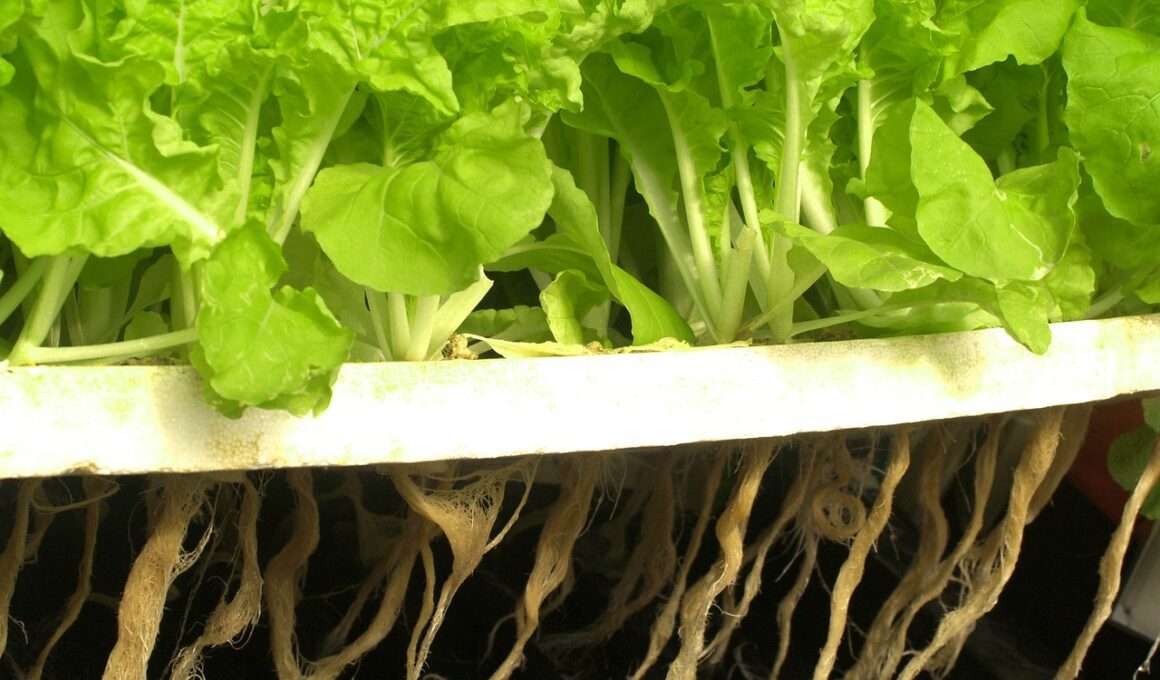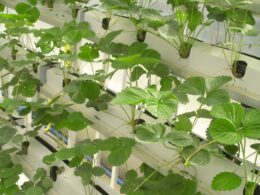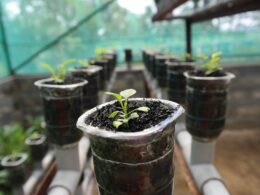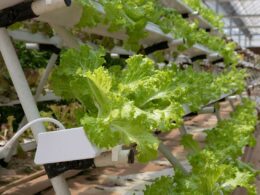Are your plant’s leaves turning yellow? It’s natural to worry and wonder if you’re doing something wrong. One common thought is that over watering could be the culprit. But is that really the case?
Let’s delve deeper into the causes of yellowing leaves and find out if over watering is to blame.
First, it’s important to understand that yellowing leaves can be caused by a variety of factors. While over watering is one of them, it’s not always the case. In fact, other issues such as nutrient deficiencies, pests and diseases, and environmental factors can also cause yellowing leaves.
By understanding the different causes, you’ll be able to accurately identify the issue and take appropriate action to help your plant thrive.
So, let’s explore the different causes of yellowing leaves and find out if over watering is really the culprit.
Understanding the Causes of Yellowing Leaves
Discovering the reasons behind leaves turning yellow can be fascinating and enlightening. It can help you understand your plant’s health and prevent further damage.
Yellowing leaves can occur due to natural causes, such as aging and shedding, or environmental factors like extreme temperatures, light exposure, and humidity levels.
However, yellowing leaves can also be a sign of common plant diseases, such as leaf spot, powdery mildew, or root rot. The treatment for these diseases often involves removing the affected leaves, spraying fungicides, and providing proper drainage and ventilation.
To prevent yellowing leaves, it’s essential to monitor your plant’s watering schedule. Overwatering can lead to root rot and suffocation, causing yellowing leaves as a result. Ensure that your plant’s soil is well-drained and moist, not saturated.
With proper care and attention, you can keep your plants healthy and vibrant, free from yellowing leaves.
Identifying Over Watering
If you’re experiencing yellowing leaves, it’s important to determine whether over watering is the cause.
Signs of over watering include wilting, yellowing, and mushy leaves.
You can test for over watering by checking the soil moisture level and assessing the plant’s root system.
If over watering is the issue, you can correct it by adjusting your watering schedule and improving drainage.
Signs of Over Watering
You can tell you’ve been overdoing it with your watering when the plants start to look like they’ve been sitting in a swamp for too long. Yellow leaves are a common sign of over watering. When soil is constantly saturated, it deprives the plant of oxygen, which causes the leaves to turn yellow and eventually die.
Another sign of over watering is wilting, even when the soil is wet. This is because the roots are suffocating and cannot absorb the water.
To prevent over watering, make sure to check the soil moisture level before watering. Also, consider using a well-draining soil mix and pots with drainage holes. Proper plant stress management is key to keeping your plants healthy and thriving.
How to Test for Over Watering
If your plants are struggling to grow and you’re not sure why, it might be worth testing for over watering. To do this, check the moisture level of the soil and ensure proper drainage. Over watering can lead to yellow leaves, but it’s not the only cause.
To test for over watering, stick your finger into the soil about an inch deep. If the soil is wet at that depth, it’s likely that you’re watering too frequently. If the soil is dry, it’s time to water your plant.
It’s important to note that different plants have different watering needs, so it’s important to research your specific plant’s watering requirements. Additionally, proper drainage is crucial to avoid over watering. Make sure that your plant’s pot has drainage holes and that excess water can escape.
By monitoring watering frequency and soil moisture, you can ensure that your plant is getting the right amount of water and avoid yellow leaves due to over watering.
How to Correct Over Watering
To correct overwatering, it’s important to adjust your watering frequency and ensure proper soil drainage. If you notice yellow leaves on your plant, it’s a sign that you may be watering too much.
To fix this, reduce the frequency of your watering schedule and check to see if the soil is draining properly. Watering frequency will depend on the type of plant and the environment it’s in, but generally, it’s better to underwater than overwater.
You can also improve soil drainage by adding organic matter or perlite to the soil mix. By making these adjustments, your plant will be able to absorb the right amount of water and nutrients, leading to healthy green foliage.
Addressing Nutrient Deficiency
Addressing nutrient deficiency is crucial for maintaining healthy plant growth. The first step in addressing deficiency is nutrient supplementation. You can add a balanced fertilizer to the soil to provide essential nutrients to the plant. This will help prevent yellowing leaves caused by a lack of nutrients.
Soil pH management is also important in addressing nutrient deficiency. Different plants require different pH levels to absorb nutrients effectively. You can adjust the pH level of the soil by adding lime to increase pH or sulfur to decrease pH. When the soil pH level is optimal, the plant can absorb nutrients more easily. This will prevent yellowing leaves.
Lastly, it is important to identify which specific nutrient is deficient in the plant and address it accordingly. You can do this by observing the symptoms of the plant and conducting a soil test. Once you have identified the specific nutrient, you can add it to the soil in the form of a fertilizer or a nutrient solution. Addressing the specific nutrient deficiency will prevent yellowing leaves and promote healthy plant growth.
Dealing with Pests and Diseases
When it comes to dealing with pests and diseases in your plants, there are a few key things you need to know.
First, it’s important to be able to identify common pests and diseases so that you can take the appropriate measures to treat them.
Second, there are a variety of treatments available, ranging from natural remedies to chemical solutions.
Finally, the best way to deal with pests and diseases is to prevent them from happening in the first place by practicing good plant care and hygiene.
Common Pests and Diseases
Watch out for pesky bugs and plant illnesses that can harm your greenery. Some of the most common pests that can attack your plants include aphids, spider mites, and mealybugs. These tiny insects can suck the sap from your plants, causing them to wilt and die.
To prevent infestations, you should regularly inspect your plants and remove any dead or diseased leaves. If you do notice an infestation, there are a variety of treatment options available, including insecticidal soap, neem oil, and pyrethrin.
Another common problem that can affect your plants is diseases. Fungal diseases like powdery mildew and black spot can cause leaves to turn yellow or brown and eventually die. To prevent these diseases, make sure your plants are properly spaced and receive adequate sunlight and air circulation.
If you do notice signs of disease, remove any infected leaves and treat with a fungicide spray or other appropriate treatment method. By taking preventative measures and quickly treating any issues that arise, you can keep your plants healthy and thriving.
How to Identify and Treat Pests and Diseases
You can easily identify and treat pests and diseases in your plants by following these simple steps.
First, inspect your plant regularly for any signs of damage, such as holes in leaves, discoloration, or wilting.
Second, research the specific type of plant you have to determine common pests and diseases that it may be susceptible to.
Third, consider using natural remedies before turning to chemical solutions or professional help. Some effective natural remedies include neem oil, insecticidal soap, and garlic spray.
If natural remedies don’t work or you’re dealing with a severe infestation, professional help may be necessary.
Options for pest control include hiring a licensed exterminator or seeking advice from a garden center or agricultural extension office.
It’s important to address pests and diseases as soon as possible to prevent further damage to your plant and to avoid the spread of infestations to other plants in your garden.
By following these steps and being proactive in your plant care, you can ensure a healthy and thriving garden.
Prevention Measures
The best way to avoid pests and diseases in your plants is by taking preventative measures. This includes keeping your garden clean and healthy, regularly pruning and removing dead or diseased plant material, and planting disease-resistant varieties. However, one of the most important preventative measures is proper watering.
Watering frequency and soil moisture are crucial factors in preventing plant diseases. Over-watering can lead to root rot and other fungal diseases, while under-watering can stress the plant and make it more susceptible to pests and diseases. To ensure proper watering, it’s important to monitor the soil moisture regularly and adjust watering frequency accordingly. A simple way to check soil moisture is by sticking your finger about an inch into the soil – if it feels dry, it’s time to water. By taking these preventative measures, you can keep your plants healthy and thriving.
| Watering Frequency | Soil Moisture | Prevention Measures |
|---|---|---|
| Water regularly, but not too often | Check soil moisture regularly and adjust watering frequency accordingly | Monitor plants for signs of stress or disease |
| Avoid over-watering | Stick finger into soil to check moisture level | Keep garden clean and healthy |
| Don’t let soil dry out completely | Use a moisture meter for more accurate readings | Plant disease-resistant varieties |
Environmental Factors
When it comes to maintaining healthy plants, it’s important to consider environmental factors such as humidity, temperature, and soil quality. These factors can have a significant impact on the health of your plants, and can contribute to yellow leaves.
For example, if your plants are exposed to high levels of pollution, this can cause damage to the leaves and lead to yellowing. Climate change is another environmental factor that can contribute to yellow leaves. As temperatures rise, plants may become stressed and struggle to absorb nutrients from the soil. This can lead to yellowing of the leaves, as well as other signs of stress such as wilting or leaf drop.
To combat the effects of climate change, it’s important to provide your plants with the proper care and attention they need to thrive. In addition to pollution and climate change, soil quality is another important environmental factor to consider. If your soil is too compacted or does not drain well, this can lead to overwatering and yellow leaves.
Make sure to test your soil regularly and amend it as needed to ensure that your plants have the right balance of nutrients and moisture. By paying attention to these environmental factors, you can help prevent yellow leaves and ensure that your plants stay healthy and vibrant.
Frequently Asked Questions
Can yellow leaves be a sign of under watering?
Are you struggling to keep your plants healthy? One common issue that many people face is yellow leaves. But did you know that yellow leaves can be a sign of both over watering and under watering?
It’s important to understand the differences and solutions for both to properly care for your plants. Over watering can lead to root rot and suffocate the plant, while under watering can cause the plant to dry out and become stressed.
To properly water your plants for healthy leaves, make sure to check the soil moisture level regularly and water only when the top inch of soil is dry. Avoid over watering by ensuring proper drainage and using a well-draining soil mix.
By properly watering your plants, you can keep them healthy and thriving.
How can I tell if my plant has a nutrient deficiency?
To determine if your plant has a nutrient deficiency, you need to identify the symptoms. Look for yellowing or browning of leaves, stunted growth, and abnormal leaf shape.
Once you’ve identified the issue, you can begin treatment options. Depending on the deficiency, you may need to add fertilizer, adjust the pH of the soil, or provide more sunlight.
It’s important to research the specific needs of your plant and address the deficiency promptly to ensure its health. By regularly monitoring your plant’s growth and addressing any issues, you can help it thrive and flourish.
What are some common pests and diseases that can cause yellow leaves?
If you notice yellow leaves on your plants, it’s important to identify the cause as quickly as possible.
Common pests and diseases that can cause yellow leaves include spider mites, aphids, fungal infections, and viral diseases.
Preventive measures can include keeping your plants healthy with proper watering and fertilizing, as well as regularly inspecting for pests and diseases.
Treatment options can vary depending on the specific issue, but may include using insecticidal soap or a fungicide.
Remember to always follow the instructions on any products you use and take steps to prevent future outbreaks.
Taking quick action can help keep your plants healthy and thriving.
Can too much sunlight cause yellowing leaves?
If you’re noticing yellowing leaves on your plants, it could be due to a variety of factors. One of the causes might be the effect of shade on the plant.
If your plant isn’t getting enough sunlight, it can lead to plant stress and yellowing leaves. On the other hand, too much sunlight can also cause yellowing leaves and photosynthesis problems.
It’s important to find the right balance of light for your plants. If you’re concerned about the health of your plants, it’s always a good idea to consult with a professional or do some research to determine the cause of the yellowing leaves.
Remember, healthy plants mean a healthy environment, so it’s worth taking the time to care for them properly.
How quickly can a plant recover from yellowing leaves?
If you notice yellowing leaves on your plant, don’t panic! It’s a sign that your plant needs some extra attention.
Reversing damage can take some time, but with a consistent plant care routine, you can encourage new growth and healthy leaves.
The first step is to identify the cause of the yellowing leaves. It could be due to overwatering, underwatering, lack of sunlight, pests, or disease.
Once you’ve identified the cause, take action to correct it. Adjust your watering schedule, move the plant to a sunnier spot, or treat for pests and disease.
The importance of soil quality cannot be overstated. Make sure your plant is in well-draining soil that is rich in nutrients.
With time and patience, your plant will recover and thrive. Remember to keep up with regular plant care to prevent future yellowing leaves.
Conclusion
So, do yellow leaves mean over watering? As you’ve learned, not necessarily.
Yellowing leaves can be caused by a variety of factors, including nutrient deficiencies, pests, diseases, and environmental factors. However, over watering is a common culprit that can lead to root rot and ultimately, yellowing leaves.
If you suspect over watering is the cause of your yellowing leaves, it’s important to identify and address the issue promptly. This may involve adjusting your watering schedule, improving drainage, or using a moisture meter to monitor soil moisture levels.
By taking proactive measures and addressing the root cause of yellowing leaves, you can help your plants thrive and avoid common gardening pitfalls.








